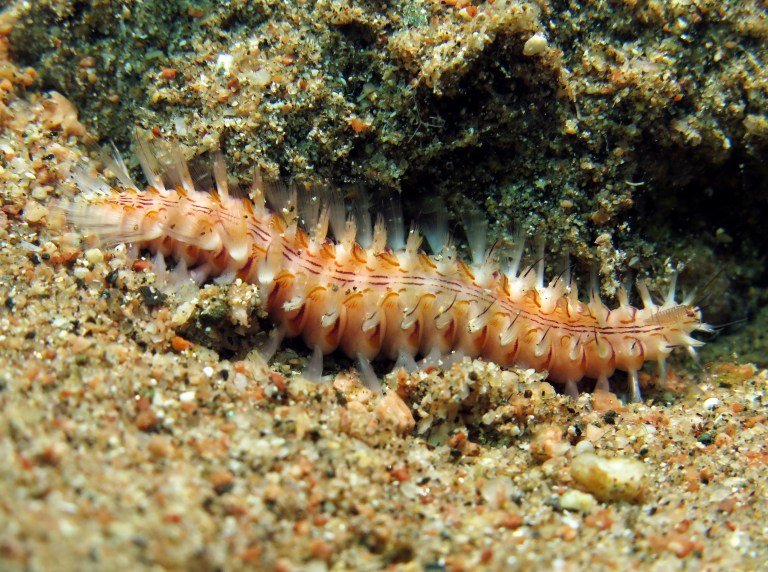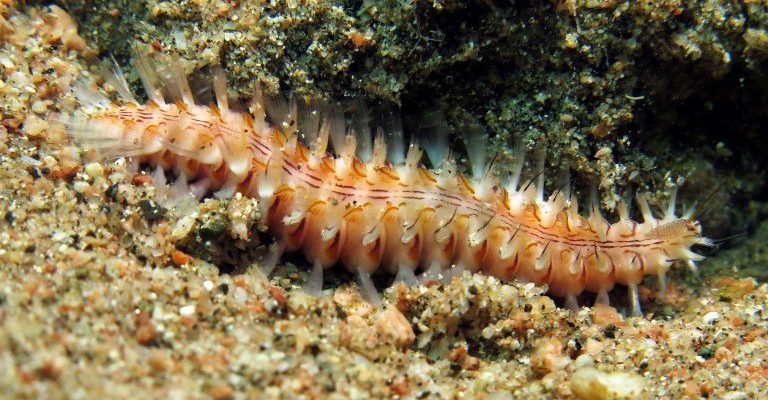
Let me put it this way: imagine you’re at a buffet, trying to enjoy your meal while a fellow diner is eyeing your plate a little too intensely. You might feel uneasy, right? Similarly, while bristle worms are essential for the ecosystem of your aquarium, their relationship with fish can sometimes be a bit complicated. So, let’s dive deeper into the world of bristle worms and how they interact with healthy fish in your aquarium.
What Are Bristle Worms?
Bristle worms belong to the class Polychaeta, a large group of segmented worms found in both freshwater and marine environments. In the aquarium hobby, the most common type you’ll encounter is the **fireworm**, known for its vibrant colors and bristling setae — the bristles that give these creatures their name.
These worms typically thrive in the substrate and on the aquarium’s Rockwork, feeding on decaying organic matter, algae, and detritus. They’re like the cleanup crew, helping to maintain water quality by breaking down waste. However, for someone just starting their aquarium journey, it’s easy to mistake them for a threat.
While bristle worms serve a vital role in your tank’s ecosystem, they can sometimes make you raise an eyebrow, especially if you suddenly notice your fish behaving strangely. So, what’s the deal? Do these critters ever go on the offensive?
Do Bristle Worms Attack Healthy Fish?
The short answer is: not typically. Healthy fish usually aren’t on the menu for bristle worms. These worms are generally scavengers, munching on leftover food and waste rather than actively hunting live fish. However, there are a few caveats to consider.
Bristle worms can sometimes nibble on sick or injured fish. It’s a bit like how a scavenger might pick at a carcass; it’s not a pleasant image, but in the wild, nature can be ruthless. If your fish are weak, stressed, or otherwise compromised, they may become vulnerable to a curious bristle worm.
However, it’s essential to note that healthy, vigorous fish usually have very little to fear from bristle worms. If you see your fish acting weirdly or hiding, it’s worth investigating other potential issues, like water quality or tank mates.
Why Healthy Fish Might Interact with Bristle Worms
You might be surprised to learn that fish and bristle worms can actually coexist quite peacefully — in many cases, they won’t even notice each other. That said, there are a few reasons why healthy fish might interact with or even provoke bristle worms.
1. **Curiosity**: Fish are often inquisitive. They might poke around in the cracks and crevices where bristle worms tend to reside. This can lead to a few harmless encounters, but it’s usually just a matter of fish exploring their environment.
2. **Competition**: Healthy fish are often competing for food. If there’s leftover food settling on the substrate, both the fish and the bristle worms might rush toward it. In this scramble, a fish might accidentally disturb or provoke a bristle worm.
3. **Mistaken Identity**: Sometimes, fish can mistake bristle worms for food. Small fish, in particular, might take a bite out of curiosity. If a fish nibbles a bristle worm, it might get a nasty surprise from the worm’s bristles, leading to some fishy drama in your tank.
Signs That Bristle Worms Might Be Stressing Your Fish
While bristle worms aren’t usually a threat to healthy fish, there are signs to watch for that might indicate something more concerning is happening in your tank. Here are a few red flags:
– **Increased Hiding**: If your fish are hiding more than usual, it might indicate stress in the aquarium. This could be from water quality issues, aggressive tank mates, or even the presence of too many bristle worms.
– **Visible Damage**: If you notice scratches or torn fins on your fish, this could indicate aggression from other fish in the tank — or a bristle worm that decided to take a bite out of a vulnerable fish. Still, remember that this is quite rare.
– **Erratic Behavior**: If your fish are swimming erratically or rubbing against surfaces, it might not be the worms causing the issue. It could point to disease or poor water conditions.
If you notice any of these signs, don’t panic. It’s essential to assess your overall tank conditions and consider seeking advice from a knowledgeable aquarist or local fish store.
How to Manage Bristle Worm Populations
If you find that bristle worms are getting out of control in your tank – which can happen if there’s excess food or waste – there are a few strategies you can use to manage their populations:
- Reduce Feeding: Cut back on how much you’re feeding your fish. Overfeeding is a common issue in aquariums, leading to excess waste that can fuel bristle worm populations.
- Regular Cleanings: Keep your tank clean by regularly vacuuming the substrate and performing water changes. This can help limit the food source that allows bristle worms to thrive.
- Introduce Predators: Some species of fish and invertebrates, like certain wrasses, will naturally eat bristle worms. Just be mindful of your existing tank balance before introducing new species.
- Remove Manually: If there are only a few visible bristle worms, you can remove them by hand. Just be cautious of their bristles, as they can cause irritation to your skin!
Final Thoughts on Bristle Worms and Fish
In conclusion, bristle worms are fascinating creatures that play a significant role in your aquarium’s ecosystem. While they can sometimes nibble on weak or injured fish, healthy fish generally have little to fear from them. Just remember that maintaining good water quality, feeding properly, and cleaning regularly can help keep your bristle worm population in check.
So, the next time you spot a bristle worm in your tank, you can appreciate it for the little ecosystem helper it is, knowing that concerned fish parents like you can foster a healthy environment for all your aquatic friends. Happy fish keeping!

